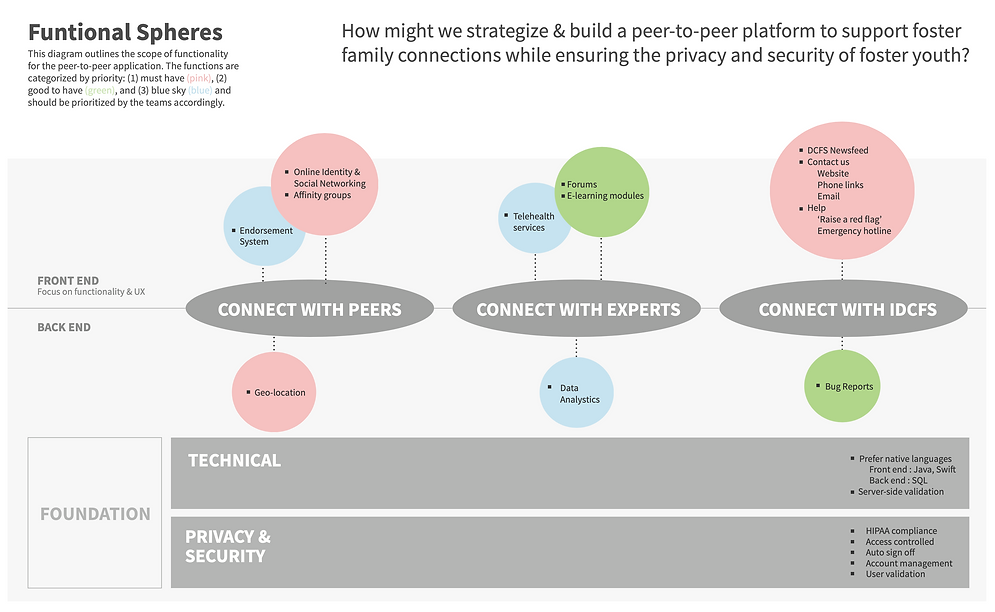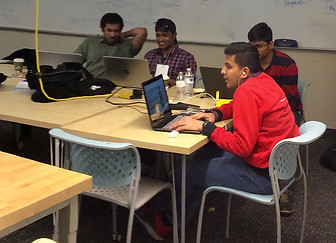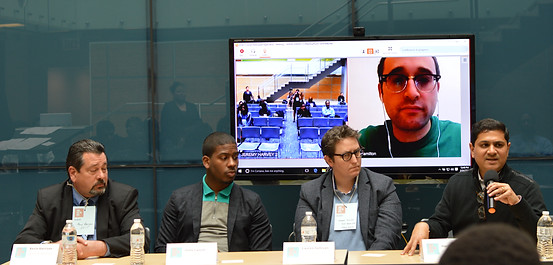
Connecting Foster Families in Illinois
BACKGROUND
The “Connecting Families” project was a collaboration between IIT Institute of Design (ID) and the Illinois Department of Child and Family Services (DCFS). The aim of the project was to explore opportunities for developing digital connections between foster families and the State to support families in navigating the complexities of the foster care system.
This project is now in its 2nd phase in which we are focussing on collaborating with multiple team that can bring expertise to build on this work to test & implement the concepts generated in the 1st phase.
SPONSOR
Illinois Department of Children and Family Services
FACULTY ADVISOR
Jeremy Alexis
TEAM
Asmina Shaikh, Jenni Schneiderman, Roxanne Knapp
Stage 1: Research & Early Concept Development
RESEARCH PROCESS
Through a highly collaborative process, the team conducted ethnographic interviews with foster families across the state to study their experiences. To gain a multidimensional perspective of the system, we also interviewed adoption agencies, case coordinators, guardian ad litum and some other internal members of the DCFS. The findings were organized by 11 key themes that were then distilled into insights and thereafter translated into design criteria that formed 3 core values for concept generation. On May 4, 2015 we presented 3 concept prototypes for connection platforms to a multidivisional leadership team at DCFS.


The war room that displayed organized data that was used to analyze data using the Quad A +A (Activities, Attitudes, Anxieties, Ambitions & Assets) framework, data tagging and other data visualization methods.
The war room that displayed organized data that was used to analyze data using the Quad A +A (Activities, Attitudes, Anxieties, Ambitions & Assets) framework, data tagging and other data visualization methods.

KEY CONTRIBUTIONS IN THE RESEARCH PROCESS
A big part of deconstructing the complex system of foster care involved real time visualization exercises to map various activities and perspectives that facilitated discussion and helped us make sense of the data. My unique contribution to this process was working with the team as well the client to visualize information using low fidelity methods during discussions which were then translated into communication pieces used to build alignment and communicate our perspective on the current state of the foster care system to the leadership at DCFS.


VALUE FRAMEWORK
A core deliverable for the 1st phase was a core values framework, derived from deep analysis & insights generation that drove the concept generation process. We also presented 3 concepts for connection platforms.

EARLY CONCEPTS


STRATEGIC ROADMAP

Stage 2: Socializing Findings & Product Development

THE HACKATHON
Hosted by the Illinois Institute of Technology, Code for the Kids, the Hackathon, was a 2 day event that will brought together emerging technology talent from local Illinois universities, child welfare experts, foster care families, and local business partners to design and build technological solutions to improve the lives of Illinois foster children and families.
The hackathon was an effort to build an inter-disciplinary team for iterative product development and testing. The goal for the hackathon was to support DCFS to identify next steps and build a working prototypes of the concepts.
FRAMING THE HACKATHON CHALLENGE



Models created to frame the challenge for the hackathon. These served as guiding visuals to communicate the purpose and intended outcomes of the hackathon as well as helped frame the hackathon within the larger scope of the project.
TOOLS FOR IDEATION
Tools designed to help hackathon teams to think through the challenge and serve as stimuli for ideation.









Stakeholder engagement during the hackathon



Student participant and expert teams at work


Opening expert panel and closing ceremony